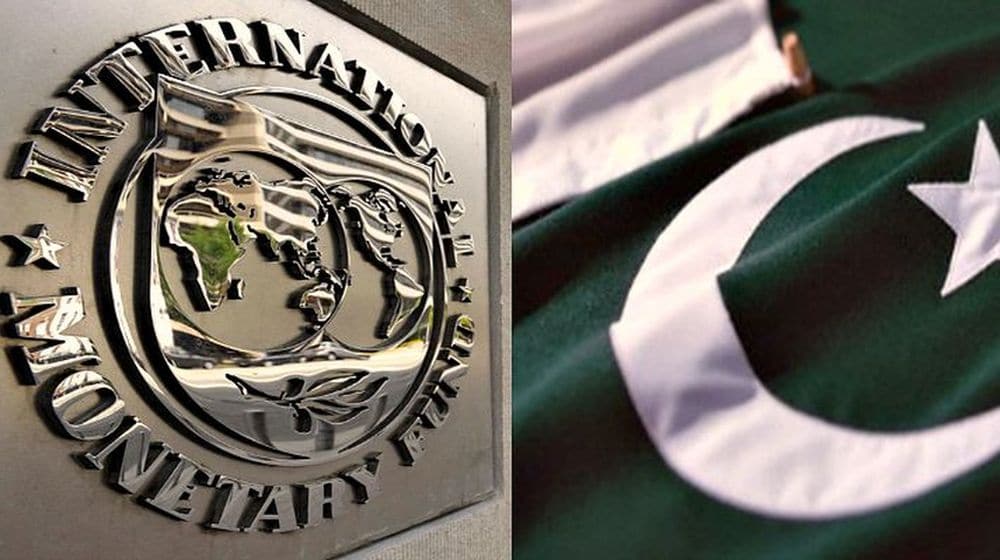Pakistan’s GDP growth is projected to moderate from 5.6 percent in 2021 to 4 percent in 2022, says the International Monetary Fund (IMF).
The Fund in its latest report “Regional Economic Outlook Middle East and Central Asia, divergent recoveries in turbulent times”, has projected Pakistan’s GDP growth at 4.2 percent for 2023.
The Fund has projected consumer price inflation at 11.2 percent for 2022, up from 8.9 percent in 2021. Core consumer price inflation is projected at 8.5 percent for 2022 and 10 percent for 2023 against 6.6 percent in 2021. In a few, domestic supply-chain constraints (Armenia, Kyrgyz Republic) and stronger domestic demand (some CCA countries, Pakistan) have added to inflation pressures, the Fund added.
The fund has projected Pakistan’s broad money growth at 14.9 percent for 2022 and 13.4 percent for 2023 against 16.2 percent in 2021.
The central government net lending/borrowing is projected at -6.3 percent of GDP for 2022 and -5.4 percent for 2023 against -6.6 percent in 2021.
The general government fiscal balance is projected at -5.8 percent for 2022 and -4.2 percent for 2023 against -6.1 percent in 2021. The general government’s total revenue, excluding grants, is projected at 12.5 percent of GDP for 2022 and 12.9 percent for 2023 compared to 12.4 percent in 2021.
Pakistan’s total government gross debt is projected at 71.3 percent of GDP for 202 and 66.8 percent for 2023 compared to 74 percent in 2021. Total government net debt is projected at 65.4 percent for 2022 and 61.7 percent for 2023 compared to 66.4 percent for 2021. The report noted that public debt in 2021 declined in Pakistan by 6 percent of GDP.
The report noted that debt is set to moderately increase for Egypt, Georgia, and Morocco, whereas the increase is more considerable for Armenia and Tunisia (about 4 percentage points) relative to 2021 reflecting the impact of depreciation on foreign currency debt. This leaves debt in EM&MI countries 13 percentage points of GDP above pre-pandemic levels, on average, in 2022, except for Pakistan whose debt level is projected at 6 percentage points of GDP below pre-pandemic levels.
Pakistan’s exports of goods and services are projected at $37.8 billion for 2022 and $40.8 billion for 2023 compared to $31.5 billion in 2021. Imports of goods and services are projected at $85 billion for 2022 and $86.5 billion for 2023 compared to $61.7 billion in 2021.
The Fund has projected Pakistan’s current account balance at -5.3 percent for 2022 and -4.1 percent in 2023 compared to -0.6 percent in 2021.
IMF has projected a decline in gross official reserves for Pakistan from $17.3 billion in 2021 to $15.9 billion in 2022 and $13.6 billion in 2023.
Pakistan’s total gross external debt is projected at $34.2 billion for 2022 and $32.7 billion in 2023 compared to $34.7 billion in 2021. Pakistan’s gross official reserves are projected at 2.2 months of imports for 2022 and 1.9 months of imports for 2023 compared to 2.4 months of imports in 2021.
Capital adequacy ratios are projected at 16.7 percent of risk-weighted assets by December 2021 compared to 17.9 percent of risk-weighted assets by September 2021. Return on assets is projected at 1.6 percent; before taxes by December 2021, the same as by September 2021.
Nonperforming Loans are projected at 7.9 percent of total gross loans (90-day basis) by December 2021 compared to 8.3 percent by September 2021.
The report further noted that Pakistan has also increased policy rates since September 2021, but its monetary policy stance remained accommodative.





















